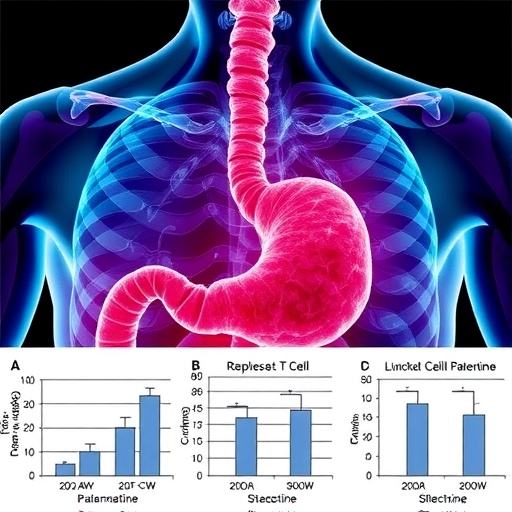In a provocative exploration of modern society’s obsession with pleasure-seeking behavior, the recently published study titled “Brat Culture: The Public Health Implications of the Glamorization of Hedonism” by Hanson, McNiel, and Streed delves deep into the phenomenon of hedonism. The authors argue that the relentless pursuit of immediate gratification and indulgence affects not only individual health but also poses significant public health concerns. The study unfolds the layers of a culture that celebrates excess while examining the psychological, social, and medical ramifications of this lifestyle.
To understand the phenomenon of hedonism, it’s essential to define what it encompasses. Hedonism is often characterized by the pursuit of pleasure as the highest good and the primary goal of human life. This contemporary version of hedonism, which the paper refers to as “brat culture,” is marked by an unrestrained glorification of self-indulgent behavior, often fueled by social media, popular culture, and consumerism. Herein lies the crux of the issue: how does a society that venerates pleasure-seeking impact collective health and well-being?
The authors meticulously analyze the role of social media as a catalyst for the glamorization of hedonism. Through platforms such as Instagram, TikTok, and YouTube, individuals are constantly bombarded with glamorous representations of a lifestyle that prioritizes enjoyment above all else. From extravagant parties to lavish travel experiences, these portrayals create an allure that draws people into adopting similar lifestyles. This relentless exposure leads to a normalization of behaviors that prioritize immediate gratification, thereby shaping societal expectations and young people’s aspirations.
Hedonism’s impact extends to behavioral health, particularly concerning substance use. The study draws a connection between the rise of hedonistic culture and escalating trends in substance abuse, including alcohol and drug use. With the reduction of stigma around these behaviors in light of their glamorization, younger generations are increasingly at risk of developing dependencies. The authors emphasize that as society normalizes escapism through substances, the threshold for what is considered acceptable behavior shifts, potentially resulting in adverse health outcomes.
Additionally, the paper addresses the psychological effects of embracing a hedonistic lifestyle. Constant engagement in pleasure-seeking activities can lead to a cycle of temporary highs followed by lows, often marked by feelings of emptiness and dissatisfaction. The pursuit of pleasure becomes an endless chase, one that can foster anxiety, depression, and other mental health issues. By glamorizing a superficial existence, society may inadvertently contribute to an increase in mental health crises among vulnerable populations.
The conceptual underpinnings of brat culture challenge traditional notions of personal responsibility. With the normalization of self-indulgence and instant gratification, the authors argue that individuals may inadvertently externalize blame for negative health outcomes. For example, in an environment where unhealthy lifestyles are praised, personal accountability becomes muddied, and collective responsibility for public health is diminished. Students and young professionals may feel pressure to align with these trends, compromising their health in the pursuit of social acceptance.
Moreover, the implications extend beyond individual health to broader public health initiatives. The study suggests that public policies and community health interventions may need to adapt to address the realities of a hedonistic culture. This includes educational campaigns designed to counteract the glamorization of unhealthy behaviors, fostering awareness around the long-term consequences of hedonism that are often overlooked in favor of short-term pleasure.
As the debate surrounding brat culture and its public health implications evolves, the authors call for a re-evaluation of societal values. They propose a shift towards promoting balanced lifestyles that prioritize wellness over excessive pleasure. This holistic approach champions the idea that true happiness and fulfillment stem from healthy relationships, mindfulness practices, and community engagement. By redefining what it means to live well, society can begin to create a more sustainable narrative that doesn’t sacrifice well-being for fleeting pleasures.
The study also examines the intersections of brat culture with socio-economic factors. It raises questions about access to health resources and how income disparity influences one’s ability to engage in hedonistic behaviors safely. Those with greater financial means may find it easier to indulge in lavish lifestyles, compounding health inequities faced by lower-income individuals who might resort to less healthy coping mechanisms in the face of stress or adversity.
In conclusion, the authors of “Brat Culture” provide an essential lens through which we can observe and critique contemporary lifestyle choices. Their research underscores the necessity for increased dialogue about the implications of hedonism on public health, urging policymakers, educators, and community leaders to take a proactive stance in addressing this emerging cultural phenomenon. The findings beckon us to confront uncomfortable truths, challenge societal norms, and cultivate an environment that celebrates health and well-being over fleeting pleasure.
As we continue to navigate an increasingly hedonistic landscape, the lessons from this study resonate more than ever. Prioritizing a balanced approach to life—one that encompasses enjoyment while remaining cognizant of its impact on health—may very well be the key to forging a healthier, more connected society moving forward.
Subject of Research: The public health implications of the glamorization of hedonism.
Article Title: Brat Culture: The Public Health Implications of the Glamorization of Hedonism.
Article References:
Hanson, M., McNiel, J. & Streed, C.G. Brat Culture: The Public Health Implications of the Glamorization of Hedonism.
J GEN INTERN MED (2025). https://doi.org/10.1007/s11606-025-10023-9
Image Credits: AI Generated
DOI: https://doi.org/10.1007/s11606-025-10023-9
Keywords: Hedonism, Brat Culture, Public Health, Mental Health, Substance Abuse, Social Media, Behavior, Lifestyle Choices, Community Health, Policy Responses.
Tags: brat culture and its implicationsconsumerism and health riskscultural obsession with pleasureglamorization of excess lifestyleshedonism and public healthimpacts of pleasure-seeking behaviorindividual versus collective healthmedical ramifications of indulgent behaviormodern hedonism and well-beingpsychological effects of hedonismsocial consequences of indulgencesocial media influence on health





